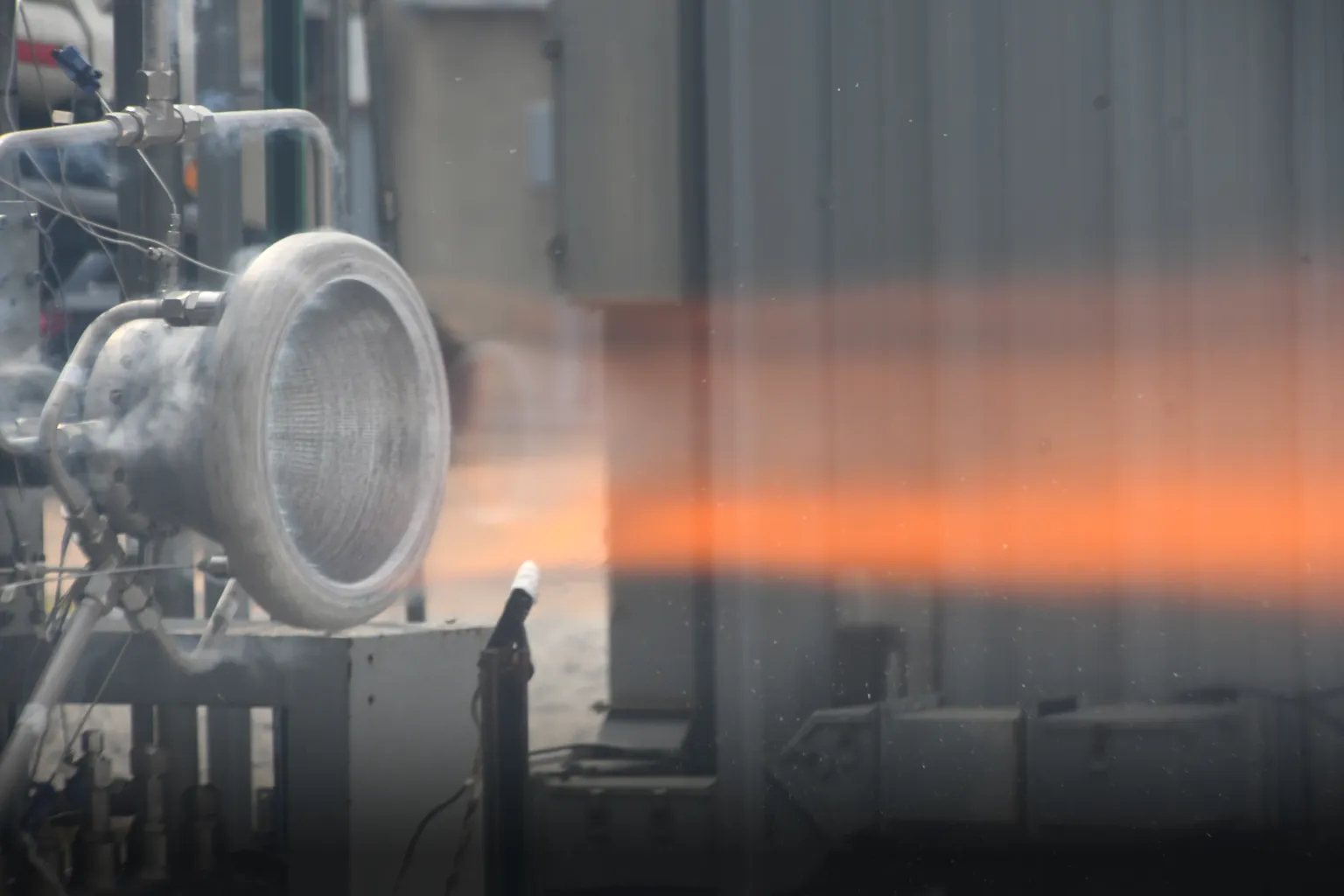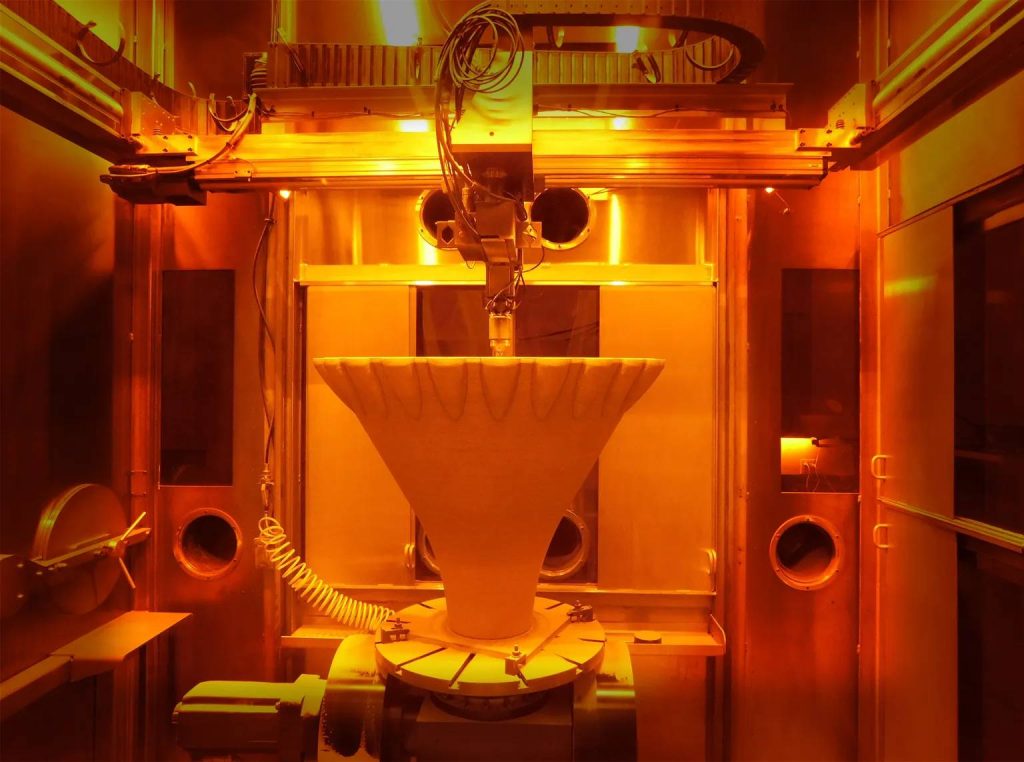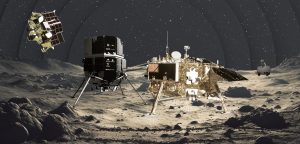NASA’s 3D Printed Rocket Nozzle Ready For Deep Space
25th Oct 2023
NASA has 3-D printed a novel rocket engine nozzle for deep space exploration, and has created a new form of aluminium in the process. Under the Reactive Additive Manufacturing for the Fourth Industrial Revolution (RAMFIRE) project, NASA additively printed the engine nozzle out of aluminium due to the material’s low density, light weight and strength.
Eventually, they aim to use the nozzle for upcoming deep space programmes to fulfil NASA’s Moon to Mars objectives, the US space agency said in a statement. The programme is facilitated by NASA, Elementum 3D, and RMP Innovations (RPMI). They are partnering under NASA’s announcement of Collaborative Opportunity, with funding provided by NASA’s Space Technology Mission Directorate (STMD).
John Vickers, principal technologist for STMD, said: “Projects like this mature additive manufacturing along with advanced materials, and will help evolve new propulsion systems, in-space manufacturing, and infrastructure needed for NASA’s ambitious missions to the Moon, Mars, and beyond.”
The 3-D Printed Rocket Engine Nozzle

Engineers from NASA’s Marshall Space Flight Centre have been collaborating closely with Elementum 3D to complete the printing process. NASA was previously striving to create an aluminium material that could be welded and is heat resistance. However, aluminium can crack when welded and is susceptible to breakages when exposed to extreme heat.
Nevertheless, NASA found the solution: 3D printing the aluminium rocket nozzle. By designing the component to house “small internal channels”, NASA said they can reduce the heat enough to avert melting. NASA also built the nozzle to be a single piece, thereby reducing the need for more bonds and manufacturing time. Previously, the process entailed building thousands of individual parts that were put together piece by piece. A new form of aluminium, called A6061-RAM2, was invented for the process.
Using NASA’s newly formed aluminium and a ‘modified laser powder directed energy deposition technology’, RPMI then built the complete RAMFIRE propulsion system using their LP-DED process. NASA said their novel nozzle can “withstand high structural loads,” enabling greater payloads to be sent to deep space.
Hot Fire Testing The Nozzle
To put the engine nozzle through its paces, NASA ran a series of rigourous tests. They hot-fired the nozzle using two concoctions: liquid oxygen and liquid hydrogen, then liquid oxygen and liquid methane. The two tests went off without a hitch, completing 579 seconds – or close to 10 minutes – of ignition. Concerns arose when the chambers experienced pressures of over 825 psi. However, the nozzle rose to the occasion and completed 22 starts. NASA said: “this event demonstrates the nozzles can operate in the most demanding deep-space environments.”
3D Printing In The Space Industry
3D printing has become increasingly common in space manufacturing. Comparatively, UK-based Skyrora 3D printed their 70kN engine for their XL rocket. Additionally, the University of Sheffield also 3D printed a liquid rocket engine using a metallic printing process.
Sights are now set on using NASA’s printing technique for manufacturing satellites and other instruments, with interest arising from commercial and aerospace companies. NASA said they are in the process of “shar[ing] the data… with commercial stakeholders and academia.”
Paul Gradl, RAMFIRE principal investigator at NASA’s Marshall Space Flight Centre, said: “Industry partnerships with specialty manufacturing vendors aid in advancing the supply base and help make additive manufacturing more accessible for NASA missions and the broader commercial and aerospace industry.”


![OSIRIS-REx Mission: NASA Finally Removed Stucked Fasteners and Access Asteroid Bennu Sample [UPDATES] OSIRIS-REx Mission: NASA Finally Removed Stucked Fasteners and Access Asteroid Bennu Sample [UPDATES]](https://orbitaltoday.com/wp-content/uploads/2023/10/nasa-osiris-res-mission-team-300x200.jpeg)




Thank you for your comment! It will be visible on the site after moderation.